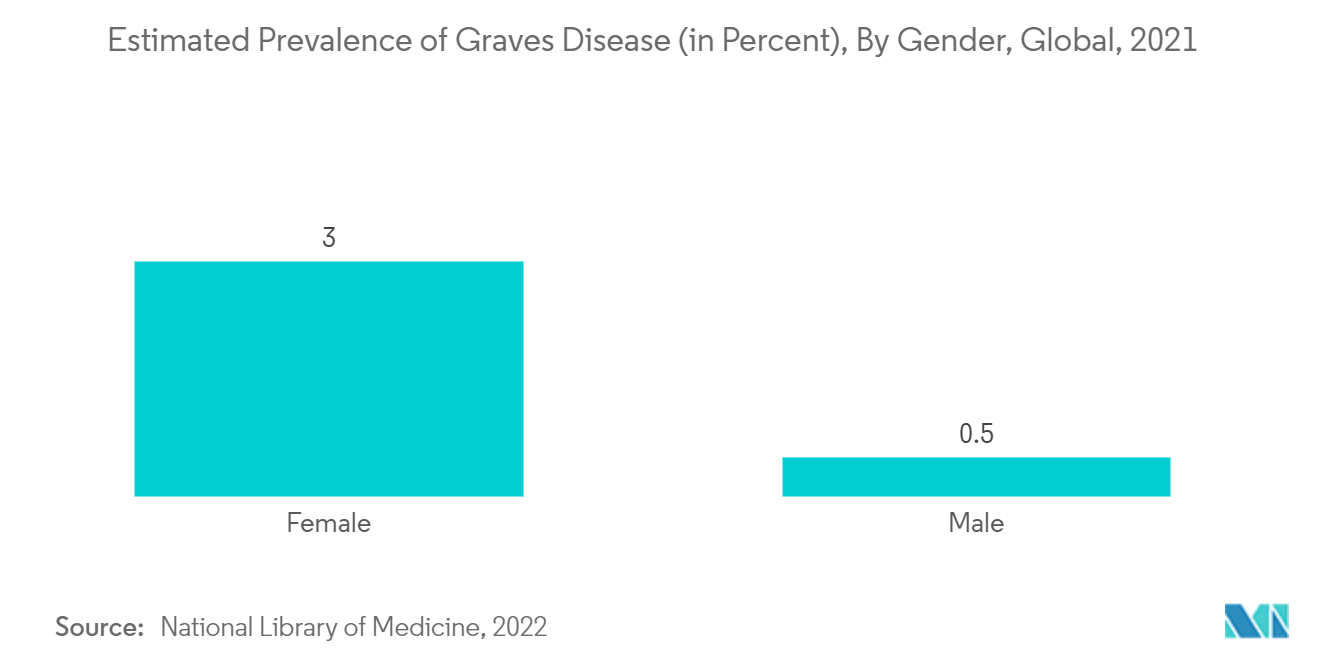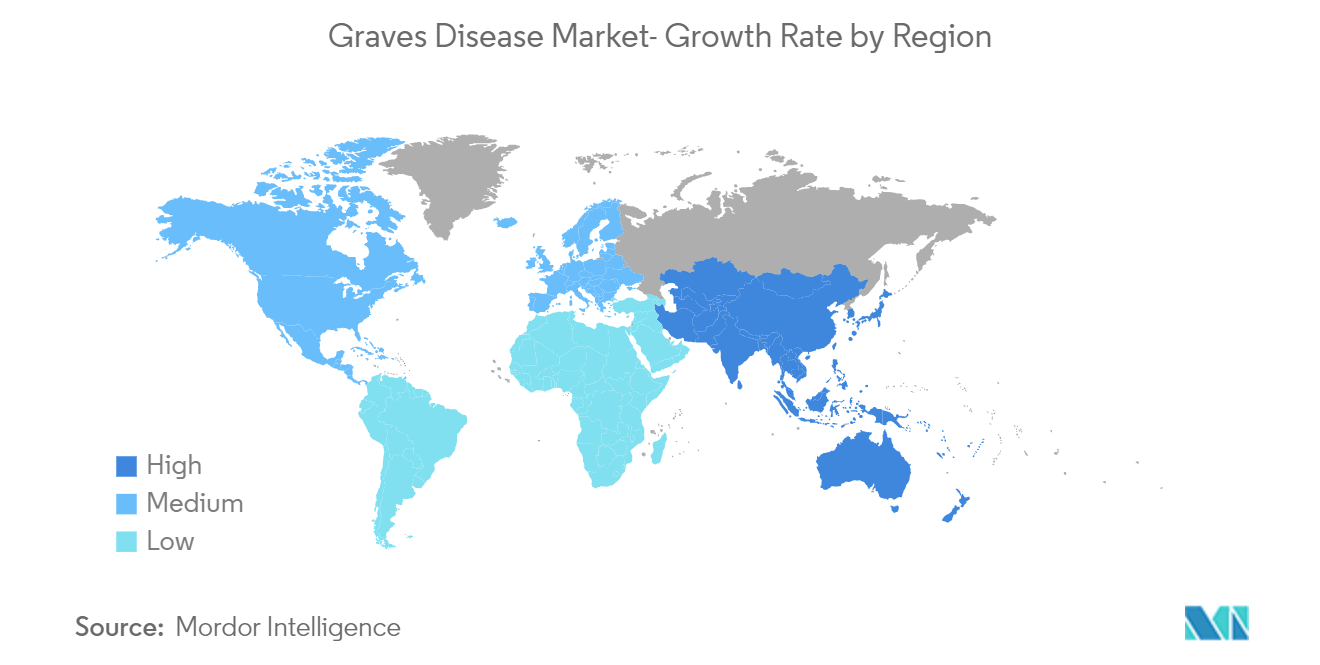Market Trends of Graves Disease Industry
Anti-Thyroid Medication Expected to Dominate the Market
In Graves' disease, the immune system creates an abnormal antibody called thyroid-stimulating immunoglobulin. This antibody mimics the function of a normal thyroid-stimulating hormone. It attaches to the surface of thyroid cells and turns on the cells to produce thyroid hormones, leading to the overproduction of these hormones (overactive thyroid). Therefore, there is a demand for anti-thyroid medications which can suppress the activities of the overactive thyroid gland. Therefore, the anti-thyroid medications segment is expected to contribute significantly toward market growth. The anti-thyroid medications include Propylthiouracil (PTU) and Methimazole (Tapazole). These drugs prevent the thyroid from producing excess amounts of the hormone. The growing research proving antithyroid medications' efficacies in treating hyperthyroidism is expected to drive segment growth.
For instance, in the study 'The efficiency and safety of methimazole and propylthiouracil in hyperthyroidism' published in July 2021, methimazole is more efficient than propylthiouracil in patients with hyperthyroidism as the former reduces T3, T4, FT3, and FT4 levels, which results in decreasing the risk of liver function damage and increases the level of thyroid-stimulating hormone. Such positive outcomes from the studies will boost the adoption of methimazole for treating hyperthyroidism, thus, increasing their demand and driving the anti-thyroid segment.
Additionally, the study 'Efficacy of propylthiouracil in the treatment of pregnancy with hyperthyroidism and its effect on pregnancy outcomes: A meta-analysis,' published in March 2022, suggested that propylthiouracil treatment did not have adverse effects on pregnancy outcomes and is also efficient in the treatment of pregnant women with hyperthyroidism. Thus, this indicates that propylthiouracil can be efficiently used for hyperthyroidism. Hence, such factor is elevating the need for Graves' disease market.
As per the article 'Hyperthyroidism in Aging,' updated in August 2021, approximately 1-3% of subjects over the age of 60-65 years have hyperthyroidism, which is significantly high. Therefore, the growing elderly population will increase the prevalence of hyperthyroidism, thereby this is elevating the prominence of Graves' disease. Hence such factors are elevating the growth of the market.
Thus, due to the factors mentioned above, the studied segment is expected to contribute to the significant growth of the market.

North America Expected to Hold a Significant Market Share
The primary driving factors for the growth of the North American Graves' disease market are the rising prevalence of Graves' disease, the growing burden of hyperthyroidism, and the increased funding for rare diseases. The high prevalence of thyroid disorders, significant awareness about thyroid treatment and diagnosis, and availability of various treatment options due to advanced healthcare infrastructure are some key factors contributing to the region's significant growth.
The United States within North America is expected to hold a significant share of the studied market during the study period. For instance, according to the article 'What is the Prevalence of Graves' Disease in the US?' published in April 2020, Graves' disease is the most common cause of hyperthyroidism in the United States, and the incidence rate of Graves' disease is estimated to be approximately 30 cases per 100,000 persons per year. The burden of GD is significantly high, which is expected to increase the demand for its therapeutics and diagnosis, which will boost the studied market growth.
According to the article 'Graves' Disease,' updated in July 2021 and published in the National Library of Medicine, the prevalence of hyperthyroidism in the United States is 1.2%, with an incidence of 20/100,000 to 50/100,000. Although GD is a rare disease, it is creating a burden on the healthcare industry in the country, which will encourage the diagnosis and research studies in the market, thereby propelling the market.
According to the study 'Beta blockers in the treatment of hyperthyroidism,' updated in October 2021, propranolol in high doses (above 160 mg/day) slowly decreases serum triiodothyronine (T3) concentrations by as much as 30% via inhibition of the 5'-monodeiodinase that converts thyroxine (T4) to T3. This study indicates that beta blocker propranolol decreases the amount of thyroid and suppresses the activity of the thyroid gland, thereby increasing its adoption thus, driving the market.
Therefore, the studied market is expected to lead to lucrative growth in North America due to the aforementioned factors.


